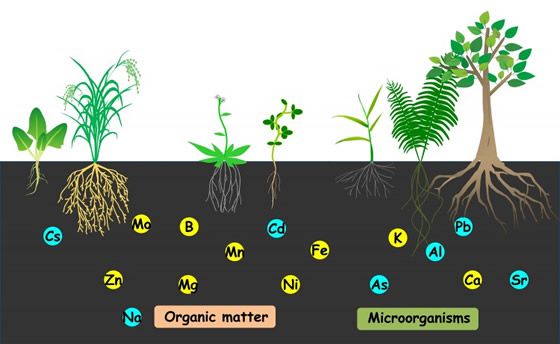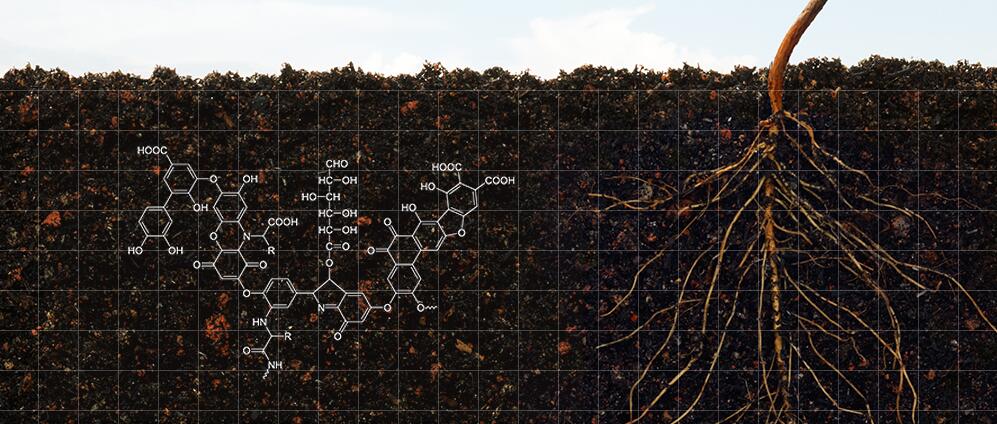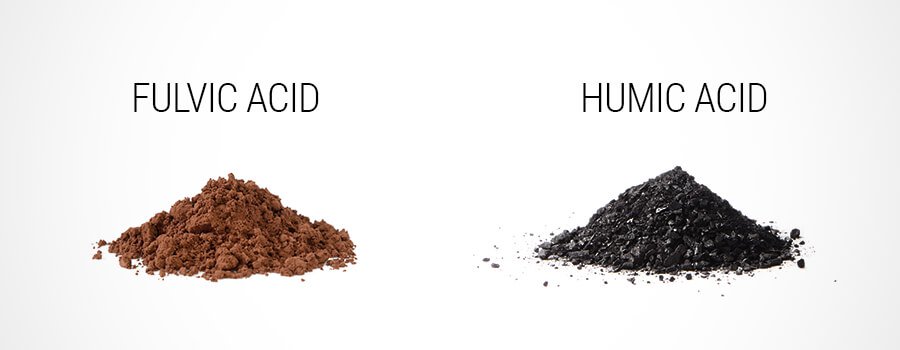 The effect of humic acid in the soil is quite obvious.Let me tell you the details.
The effect of humic acid in the soil is quite obvious.Let me tell you the details.
1.Humic acid is an active participant and promoter of soil formation.
As we all know, soil inorganic matter is decomposed by rock. Organisms and their living products (such as fungi and plant secretions) play an important role in the destruction of rocks and minerals and the formation of soil. And the role of HS formation after biological death can not be ignored. HA was actively involved in this process in the early stage of soil formation and even before the emergence of higher plants.
Our company has long found that HA and FA have a strong decomposition effect on silicate, diorite, dolomite and green curtain stone. And it can be seen that HS has a great effect on it.
2.Humic acid effect: Promotes and restricts the migration, fixation and leaching of metal ions and trace elements in soil.

Only a small part of HS in soil exists in free state, and most of them exists as :
- a) salt,
- b) metal ion complexation (chelating),
- c) iron or aluminum oxide gel
- d) Adsortion by clay, among which a) and b )play the most important role.
These humic acid-inorganic complexes have great influence on the migration or fixation of potassium, calcium, magnesium, iron, zinc, manganese and other beneficial elements in soil.
Our company uses the electrophoretic method to study and found that HA and FA in calcareous soil can form immobile complexes as well as negatively charged mobile complexes. What kind of complex is formed depends on the physicochemical conditions of the soil. It has also been found that the colloidal system of HA combined with clay minerals can reduce the leaching of Fe and AL.
We found that HA and Cu bind the most in soil. And the amount of Cu is proportional to the content of HA. And it is also found that many Cu are complexed with nitrogen groups. arsenic (As) content is also related to HA. As may be bound to the binary ketone structure in HA.
Soil HA has strong adsorption capacity for iodine. 67% of which is chemical binding. But not adsorbed to I. In the soil with high PH, the boron (B) absorbed by HA is 5 times higher than that adsorbed by clay minerals. Sometimes as high as 58mmo1 B / kg HS. The content of Se in soil HA accounts for 75% of the total Se in soil. That is to say, most Se is bound in an organic state, of which 40-95% is bound to HA or FA.
3.Humic acid is a stabilizer of soil structure.

Our company has found that in the black-calcium soil, HA forms the primary agglomerates (microaggregates) through insoluble HA-Ca complex. And the combination of this form has the greatest contribution to the stability of the soil structure.
In the podzolic soill and the red soil, the Fe O and the FA are combined into the compound with the adhesive property. In grey and brown forest soil, both of that above properties. No matter which type of soil, the effective combination of HA and inorganic materials can be obtained. The aggregates of HS-rich soil is 5 to 7 times higher than that of the barren soil. And the total porosity is 0.3-1 times. The air content and the water penetration rate are obviously higher.
4.Humic acid effect on the salt exchange capacity of soil.
Salt base exchange capacity (CEC) is an important index of soil fertility. Which determines the ability of soil to maintain nutrients. The results of soil evaluation show that HS is about twice as high as CEC in inorganic part.
The HS in the surface layer of the soil accounted for 2 -10% of the total soil weight. But the CEC of HS accounted for 35-65% of the total CEC, among which the CEC of HS in black calcium soil was the highest.
It is particularly worth noting that the increase of soil HS content is not only the contribution to HS CEC. From the data in Table 3-1, it can be seen that the CEC of inorganic part itself is much higher when it contains high HS. Such as the CEC of black calcium soil is about 2 times higher than that of other types of soil. Which indicates that the physicochemical interaction of HS with minerals changes the properties of mineral adsorption groups.
5.Humic acid effect on the water retention capacity of soil.
Because humic acid can reduce the surface tension of water. Thus reducing the contact angle between water and soil particle surface. Increasing the spreading area of water. Improving the water retention capacity of soil. According to statistics, the water retention capacity of HA-rich soil is 5-10 times higher than that of barren inorganic soil.
6.Humic acid is a warehouse for plant nutrients.

Soil HA protects and stores many nutrient elements by adsorption, complexation, chelation, ion exchange, or indirectly by activating or inhibiting soil enzymes. For example, HA itself is covalently bound with nitrogen-containing organic matter or bound by hydrogen bond. Especially the C – N bond in black calcium soil has a high water resistance. Which is the main factor of increasing mobility of soil. And is also the main slow-acting nitrogen source of plants.
In addition, HA plays an important role in promoting the mineralization of C, N, fixing N in the atmosphere. Inhibiting the fixation of available phosphorus and potassium. Promoting the dissolution of insoluble phosphorus and potassium. Reducing the loss of various nutrients. In all soils with high HA content, the content of nutritional elements is bound to be high.The research data are innumerable.







